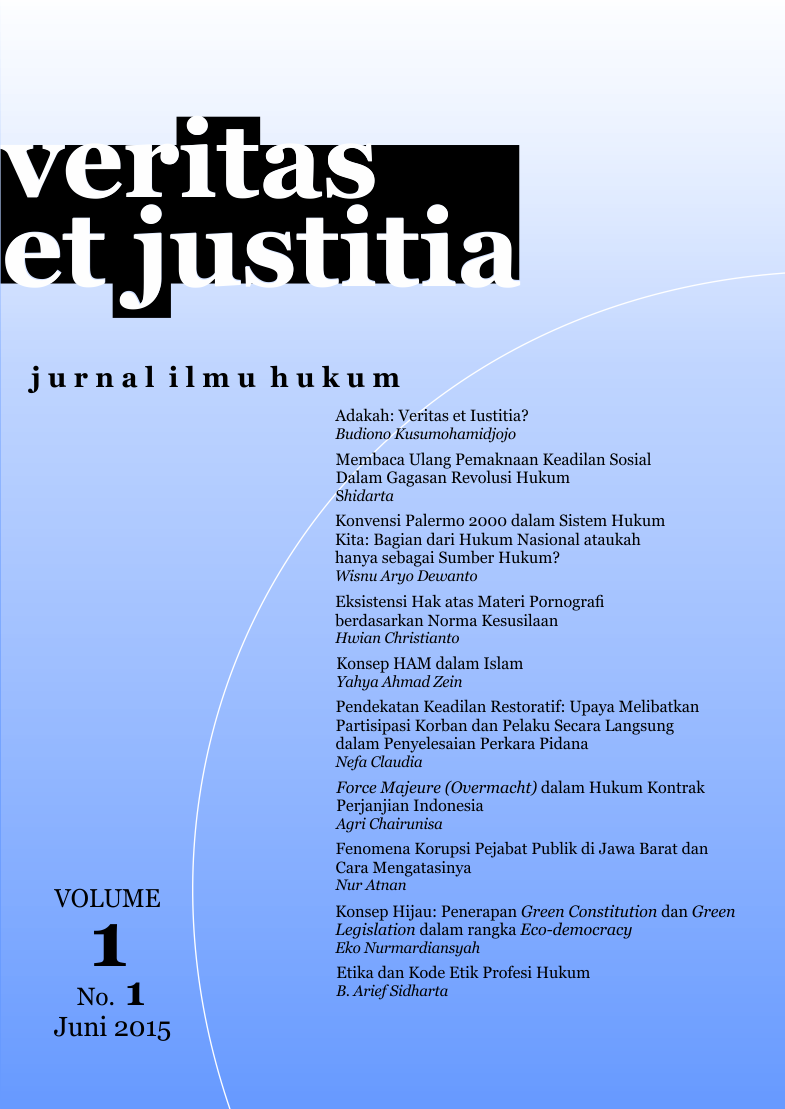KONSEP HAK ASASI MANUSIA DALAM ISLAM (Mengungkap Korelasi Antara Islam Dengan HAM)
DOI:
https://doi.org/10.25123/vej.v1i1.1418Abstract
Abstract
The intention of this article is explore how Islamic teaching regards human rights. The main finding of this basic research is that in today's modern world, the universal values of human rights function as a glue binding society together. Although in pluralist modern society it become very difficult to impose one standard paradigm or worldview. In regard to Islam and human rights important is to take cognizance of the huquuqul ibad category. This enables us to differentiate between, firstly, the existence of human rights within a country and directly applicable and, secondly, human rights whose existence cannot be directly implemented by a country. Another finding is that there Islamic teaching does not contradict the universal value of human rights. There is a common ground (common values/kalimatun Sawa) between Shariah and human rights in which both demands the development of human virtues (rahmatal lil'alamin/ nurturing the whole universe)
Keywords:
Concepts, human rights, Islam
Downloads
Published
Issue
Section
License
Authors who publish with this journal agree to the following terms:
Authors retain copyright and grant the journal right of first publication with the work simultaneously licensed under a Creative Commons Attribution License that allows others to share the work with an acknowledgement of the work's authorship and initial publication in this journal.
Authors are able to enter into separate, additional contractual arrangements for the non-exclusive distribution of the journal's published version of the work (e.g., post it to an institutional repository or publish it in a book), with an acknowledgement of its initial publication in this journal.
Authors are permitted and encouraged to post their work online (e.g., in institutional repositories or on their website) prior to and during the submission process, as it can lead to productive exchanges, as well as earlier and greater citation of published work.
The Journal allow the author(s) to hold the copyright and to retian publishing rights without restrictions.






